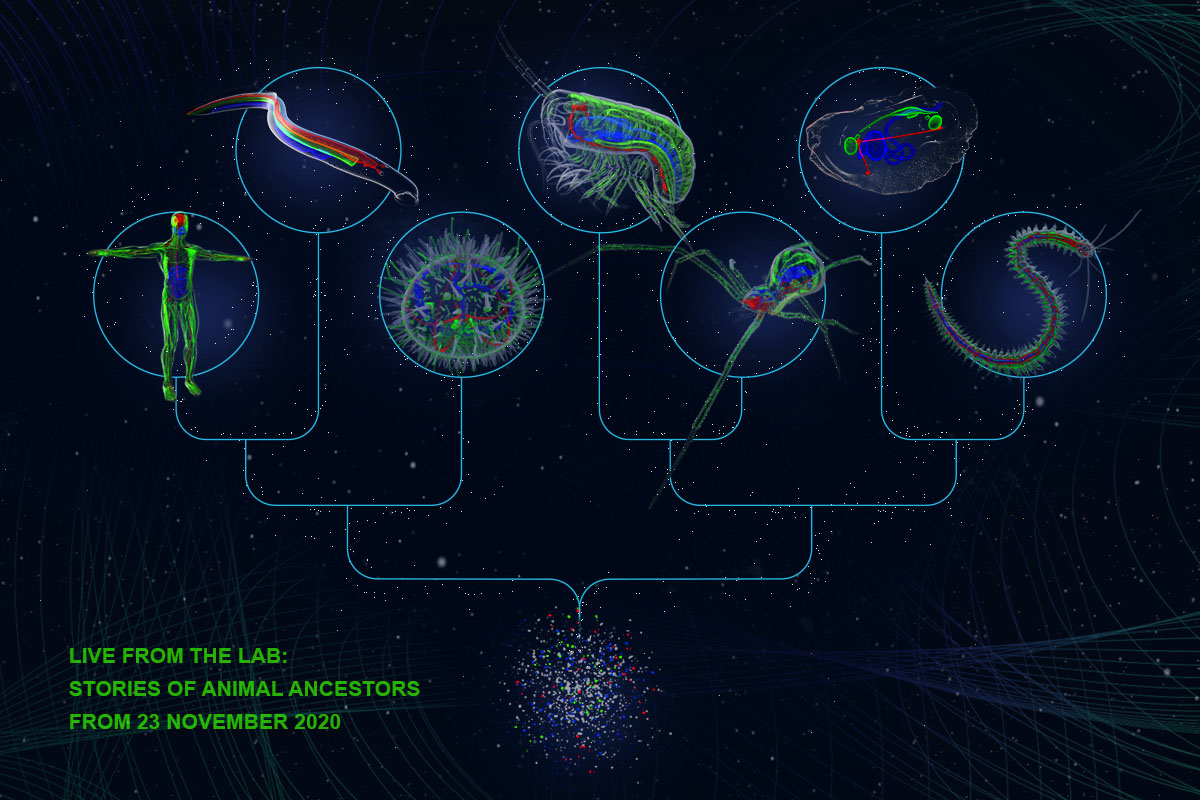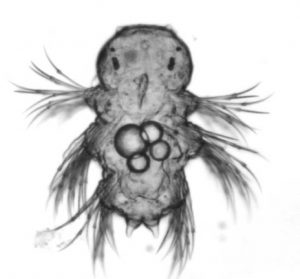Have you ever wanted to travel back in time and understand how animal life came to be? This series might be your best chance. Join researchers as they ask the same overarching question: what did animal ancestors look like?
In an attempt to answer this question, we will discuss modern methods in science, take a look at the fossil record, how cells shape the bodies of different animals and how they evolve. Bring along your burning questions on the origins and evolution of animal life and join in the discussion.

What is at the base of the family tree of animals?
The increase in virtual connectedness might be one of the most significant silver linings of the collective ordeal that 2020 has been. Trying to make the best use out of the ”Zoom era”, we are organising an online live event series where all the fellows in our network will talk about the bigger picture in their research. In the diversity of our PhD projects, we managed to settle on one question we all care about, and we all hope our results will contribute infinitesimally towards: what did animal ancestors look like?
From jellyfish to spiders and from sea urchins to oysters, and even to some animals you might never have heard of (check out Petra’s model organisms), EvoCell fellows look at a variety of different animals and their cell types. Time and time again, we find similarities that point at the common evolutionary origins of all animals. In the first installation of the lecture series “Past and Present: of Fossils and Spiders”, we’ll shed light on how this is reflected in the fossil record.

Would you ever guess that it grows up to become a worm?
Episodes 2 and 3 – “How to Generate and Regenerate an Organism” and “The Secret Lives of Sea Creatures” will explore the evolution features that we encounter across many animal groups – the ability to regenerate missing body parts and a developmental path that involves larval stages. The penultimate episode, “Ancient connection: The Evolution of the Nervous System” discusses how even animals with seemingly simple body forms can have complex nervous systems with many different types of neurons, and how all those neurons have common origins. Finally, “The Cyber Age of Science” will try to explain the digital basis of all our research and introduce you to some tools and databases anyone can access to find out more about modern biology.
The live talk series is hosted by the Natural History Museum in Berlin, and has been my possible primarily by Siri Kellner, with Milena’s logistical help. We will be moderating the event – you can meet us there.
The talks will be broadcasted over the course of three weeks in late November and early December. You can tune in from 19h to 20h CET, using the Zoom (Meeting-ID: 952 5877 3507) and YouTube links (same for every talk), or through the Natural History Museum webpages listed below.
Past and Present: Of Fossils and Spiders (23/11 19-20h CET),
How to Generate and Regenerate an Organism (30/11 19-20h CET)
The Secret Lives of Sea Creatures (1/12 19-20h CET)
Ancient Connection: The Evolution of the Nervous System (7/12 19-20h CET)

Recent Comments